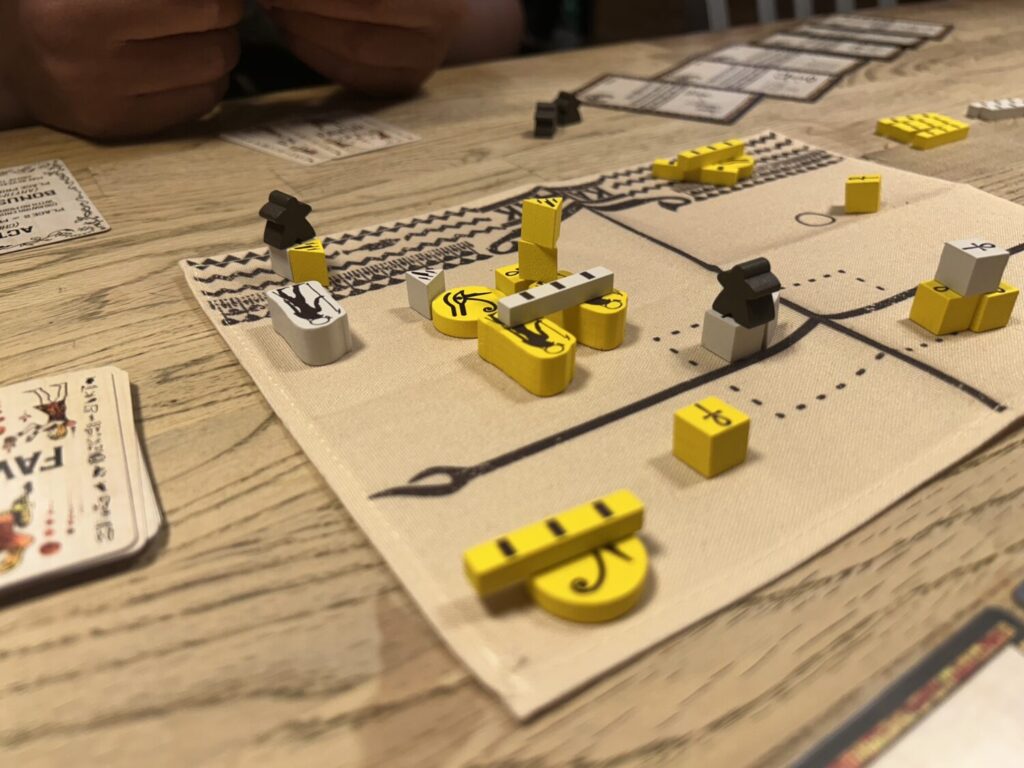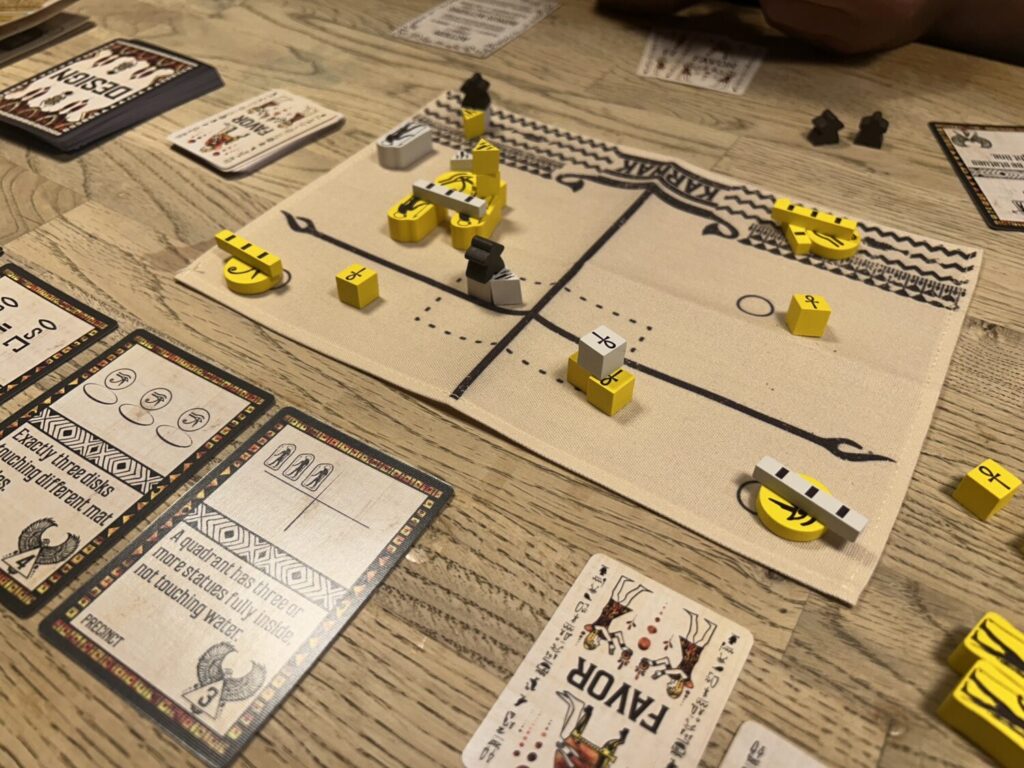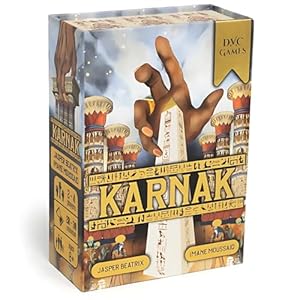Disclosure: Meeple Mountain received a free copy of this product in exchange for an honest, unbiased review. This review is not intended to be an endorsement.
At the end of my first game of Karnak, the most recent release from D.V.C. Games, I stared at the board in wonder. This was not because I was besotted; Karnak takes a few goes to reveal the full extent of its joys. Rather, I was in awe of the fact that this board, an orgy of wooden pieces in bizarre arrangements, was an entirely legible game. I can’t remember the last time I played something that would have been entirely alien to me up until I read the rules. That doesn’t happen too often when you’re in this business.
I’ve never played anything quite like Karnak, though I’ve played games that include the various aspects of the design. I’ve played building and stacking games, both cooperative and competitive. I’ve played myriad games with secret goals. I’ve played games that allow you the opportunity to stab other players in the throat. I have ample experience with all of these, and yet. Ne’er before have I played something like Karnak.

Merry Architects
We, the merry architects of Karnak, wish to build to please the Pharaoh, whose desires are written on the cards in our hands. The mat in the center of the table is our communal blueprint, which must be completed before construction begins. Say, for example, that one of my cards calls for three statues in the same quadrant. I can get things started by taking a yellow statue from the supply and placing it in one of the quadrants on the mat.
The placement of pieces is as open to you as it’s possible for it to be. There’s no grid, and pieces can be laying down or standing up, stacked or by themselves. If you can dream it, you can build it. For the most part, particularly early in the game, player turns progress in this manner, one piece added at a time until people start revealing cards.
If you fulfill the requirements on a card, you can play it to the table in front of you. The benefits of doing so are twofold. In the immediate, you get a Bonus card, which gives you one of a variety of single-use special abilities. In the longterm, you also score points. The more complex and demanding a design is, the more points it will be worth at the end of the game, but I cannot stress enough that they are not worth those points until the end of the game.
You see, your structures have to survive to be worth anything.

Office Politics
Yellow pieces are impermanent. They are rendered in pencil rather than pen. Instead of placing a yellow piece from the supply on my turn, I can instead pick up any free-standing yellow piece on the board and swap it with an identical white piece. I do not need to put that white piece back in the same spot. You may have just revealed a card worth seven points, but I now know exactly how to kneecap you.
This is the moment Karnak snaps into focus, the moment I realized this was a game about bickering in an office. I can ruin your plans, and you can ruin mine. There are measures that can be taken to protect our most treasured offerings. We all have Priest tokens that can be placed on a structure to render it immutable, but know that it is immutable. Nothing can be added, nothing can be removed. It was a thrill to realize during my second game that I could use those Priests aggressively.
That’s the experience of playing Karnak across multiple sessions. Every day, in every way, Karnak reveals itself to be a remarkably nasty piece of work, which I mean as a high compliment. For a group of seasoned players, it’s a knife fight, a series of bluffs and feints. After one game, I had a fairly coherent idea of what cards were in the deck, and I worried that would render every move transparent. Imagine my delight when it instead meant that players started obfuscating. People would place yellow pieces somewhere entirely unrelated just so they could replace it with a white piece later. You start looking for opportunities in which you can piggy back off of someone else, or interrupt them at the crucial point. The board gets flooded with tactical fulfillment of low-scoring designs just to get a Bonus card.
Karnak starts as a trepidatious building game. Once you settle in, it reveals its true self. Karnak is chaos. Karnak is wonderful.











